How do I drain the washing machine?
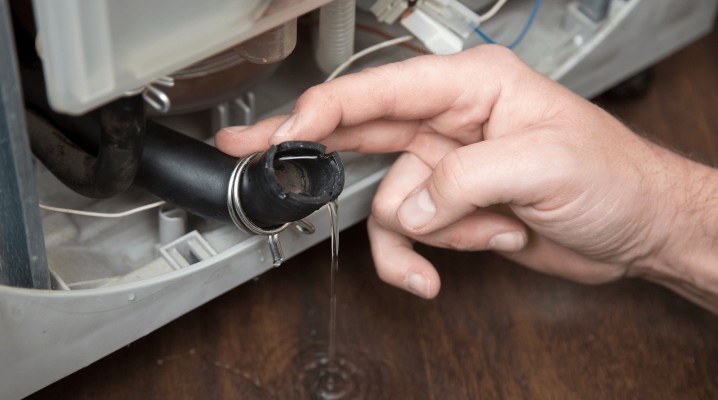
During the operation of the washing machine, situations may arise when the wash cycle does not end and water remains inside the machine. Before figuring out why the machine broke down, it's important to know how to drain the water. This can be done forcibly in several ways. It is possible to free the equipment from water manually and using an emergency drainage of residues.
Causes of the problem
The need to drain the washing machine can arise in several cases. Water can remain inside, not only in a situation where the machine has broken down, but also for other reasons.
- The laundry is too heavy. Each machine can accommodate a certain number of things, which is indicated in its technical passport. If the hostess puts more than normal laundry in the drum, the water sensor will not be able to correctly determine its content in the tank, so the control module will not give the command to drain the liquid.
- The drain system is clogged. If a blockage occurs in any element of this system, water will not normally be removed during washing. To identify the problem, you must first inspect the drain hose and sewer, then the filter and rubber pipes.
- The drain pump is out of order. It will not start if there is a breakdown in its electric motor. To identify a malfunction, the pump is removed, and the motor winding is checked with a tester. Typically, such pumps are non-separable, so in the event of a breakdown, you will have to completely change the unit.
- The sensor that detects the water level is faulty. If it does not work, the electronic unit will not receive information about the presence of water, therefore, the drain will not start. The sensor may not work well due to a blockage in the tube that connects it to the washing tub. After cleaning such a tube, work is restored. If checking the sensor shows that it is out of order, it should be replaced.
- The control module is malfunctioning. If there is any malfunction in the software or the electronic components are out of order, the water will not drain, as the drain system will not receive the required command. In case of such a breakdown, you will need the help of a qualified technician who will replace the necessary parts or the entire control module as a whole.
- The heating element is out of order. In the event of such a malfunction, the machine may stop working during rinsing. Light bulbs or error symbols on the scoreboard can help you find the problem. As soon as the heating element is replaced, the device will work as usual.

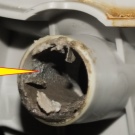
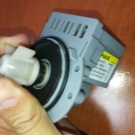
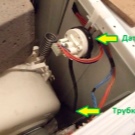


Solutions
Forced draining of water is possible by several methods, but not all of them are suitable for all models of washing machines and not all can be implemented under certain conditions. In addition, there is always the risk of a "flood", even if all the actions are correct. It is also important to remember the safety precautions, according to which the first action after detecting a stoppage of the washing process with a delayed drainage of water should be to disconnect the machine from the mains.
Prepare a few rags, a basin, and a flat screwdriver before starting work. There are several ways to drain water from a disconnected washing machine.
- Through the drain hose. Such a detail is present in all washing machines without exception, therefore, it is possible to ensure the outflow of liquid with its help in case of any breakdown. Having revealed that the water has remained inside the machine, first of all it is necessary to inspect the drain hose (make sure that it is not clogged, there are no kinks).After disconnecting the hose from the sewer, we lower its end into the basin as low as possible so that the water will drain off on its own. This option is not suitable for all washing machines.
Some manufacturers, including Siemens and Bosch, equip their devices with internal protection against water draining (this is indicated in the instructions, so check this point in the documentation before unscrewing the drain hose).
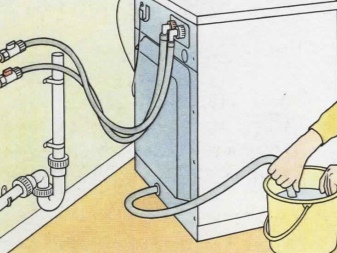
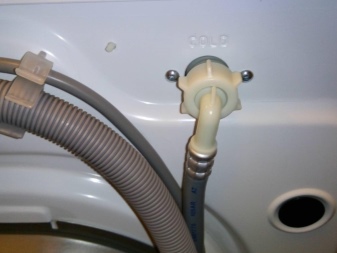
- With an emergency hose. This method of getting rid of water is available only if an emergency hose is included in the design of your device (it is not available in all models of automatic machines). It is usually located in the lower front compartment. Taking out the hose and freeing it from the plug, lower the free part into the basin. The diameter of such a part is usually small, so the process will take some time, but at the same time the water will fall exactly into the substituted container.

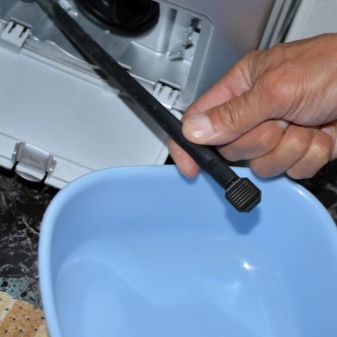
- Through the drain filter. You will find it by opening the bottom panel. Such an element of the machine is designed to protect the drain pump from possible clogging, for example, if any objects remain in the pockets of the trousers or buttons come off during washing. Water can also be forcibly drained through this filter. After removing the panel, you should tilt the machine in order to substitute a basin under it. Then turn the filter handle, pull the filter towards you and drain the water. With this method, water often falls not only into the basin, but also on the floor, so the remains should be removed with a rag.
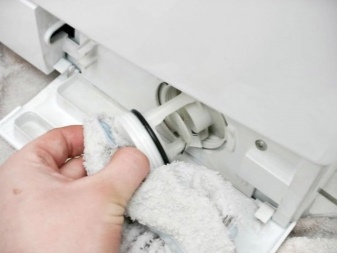
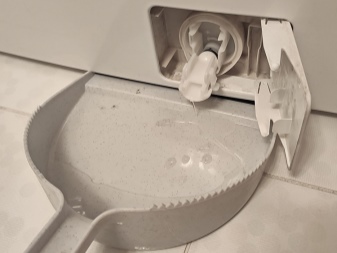
- Manually through the hatch. It is possible to drain the water in this way only if the door is not locked. Then you can open it and scoop out the liquid from the drum by hand using a ladle or mug.
If there is a lot of water in the machine, open the door by tilting the machine back. This method is not entirely convenient and, moreover, will not help to get rid of water completely.
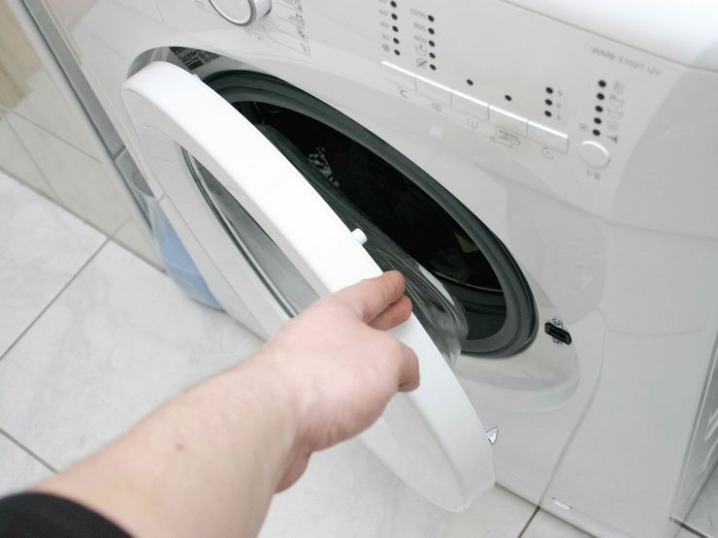
- Through the drain pipe. This element of the machine is located under the drum. To get to it, you need to remove the back wall of the device (in some machines - the side one). For this reason, this method of getting rid of water is rarely used if the previous methods did not help. Place a basin and rags under the nozzle, disconnect it from the pump and drain the water. If a blockage is detected, it must be removed, and then the water itself will merge into the basin. Before installing the pipe back, be sure to inspect it - if there is any damage, the element must be replaced.
If water remains inside the machine because there are too many clothes loaded into it, you must stop washing, wait for the door lock to release, remove some of the clothes, and then start washing further.
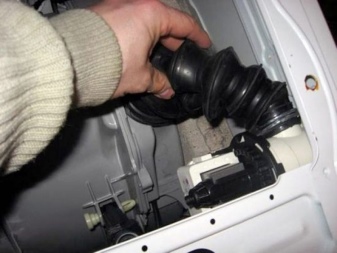
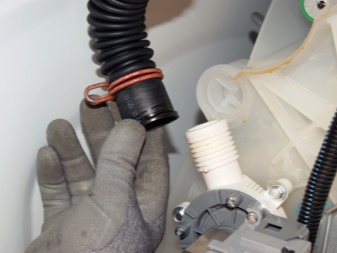
Specialist recommendations
Prevent malfunctions in which water stops draining from the machine, you can follow simple precautions.
- Checking the pockets of clothes while loading things into the machine. It is especially important to remove any metal items such as keys, coins, rings or paper clips before washing.
- Checking the strength of fastening of zippers and buttons. Be sure to fasten the snake or buttons before putting your clothes in the drum.
- Cleaning things from visible dirt. After inspecting the garment before loading, clean off any sand, thread, dust, and similar dirt.
- Regularly check the condition of the filters. You need to clean the drain system as often as recommended by the manufacturer of your equipment. If the laundry is worn out or with fluff, the filter should be cleaned immediately after washing.
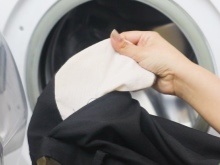

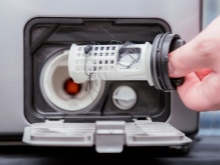
Compliance with such instructions in many cases allows you to prevent situations when water needs to be forcibly drained from the tank. But it is impossible to fully insure yourself against such cases, so it is important to find out in advance what are the possible options for action.
As you can see, the task of draining water from the machine in the event of a breakdown is not so difficult, so many can cope with it on their own.If you are not confident in your abilities, it is better to call a master who will quickly drain the water, determine the cause of the problem, repair the machine and give a guarantee for his work.
For an illustration of how to drain the water, see below.













The comment was sent successfully.